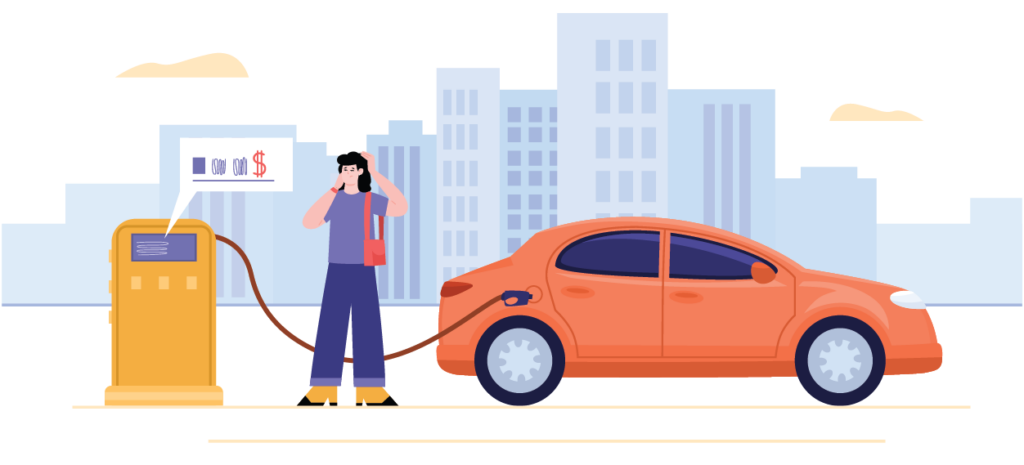Are fuel costs in Canada reaching record highs?
Grades 6 - 12
On March 3, 2022, CTV reported that gas prices have reached record highs across the country. Is this claim true? If so, how dramatic is the increase in fuel costs over the last few years?
This week, we hope to inspire you with the following data visualization about fuel costs across Canada.
To answer our question we:
- Used retail price data (1990-2022) for gasoline and fuel oil from Statistics Canada, who gathers and publishes monthly averages
- Used price data (2011-2022) on the cost of a McDonald’s Big Mac burger found in the GitHub repository of The Economist
- Created a series of line graphs and bar graphs
First, we plotted gas prices across Canada by Province from 1990 to 2022.
In the visualization, you can see that the average annual gas price was at its highest in 2022 for all provinces and territories. In this interactive plot, you can toggle the province and territory names to turn on/off the respective data graphs. The data available to us only includes the first three months of 2022. It will be interesting to see where the average annual gas price sits by the end of 2022.
Next, we compared the price of a Big Mac to the price of regular gas in Canada. We used the Big Mac pricing index as a tool to examine the relative trends in prices over the years. We further explored how changes in the prices impact the number of litres of gas you can purchase for the price of one Big Mac.
You can see from the top line graph that Big Mac prices have risen steadily since 2011, and gas prices have risen steeply since 2020. The bottom bar graph shows that currently in 2022, one Big Mac can buy about four litres of gas, which is less than the six litres of gas you could buy in 2020. Compare this to the data from 2011-2012, which shows you could buy just three litres of gas in 2011-2012 for the price of one Big Mac.
Reflect on what you see
Look and interact with the data visualizations above. When you hover your mouse over the plots, you’ll notice that more information appears. Clicking on the legend of the graphs will also make the respective plots appear or disappear.
Think about the following questions.
- What do you notice about these graphs?
- What do you wonder about the data?
Use the fill-in-the-blank prompts to summarize your thoughts.
- “I used to think _______”
- “Now I think _______”
- “I wish I knew more about _______”
- “These data visualizations remind me of _______”
Learn how we visualized the data
Go to our walk-through (in Jupyter notebook format) to see how the data science process was applied to creating these graphs, from formulating a question, gathering the data, and analyzing the data with code, to creating the graph.

